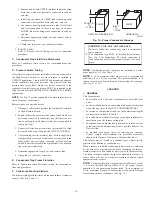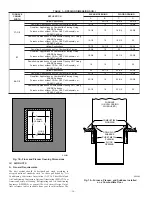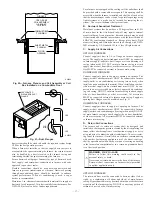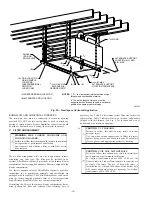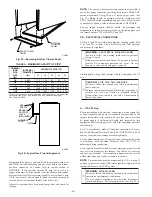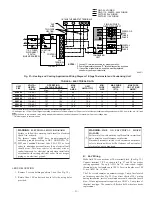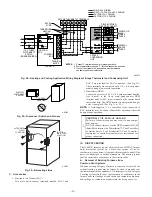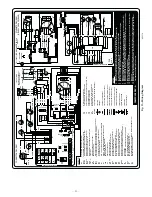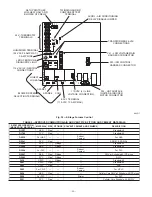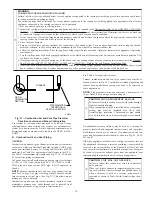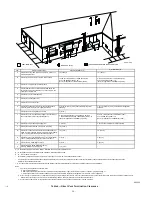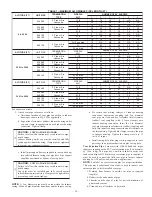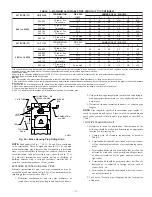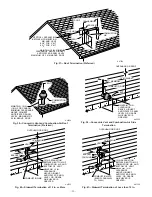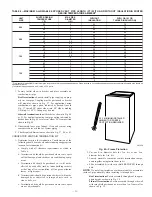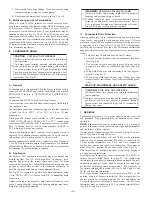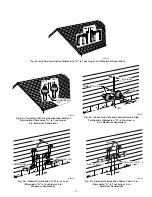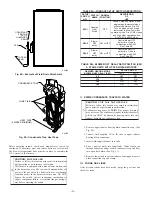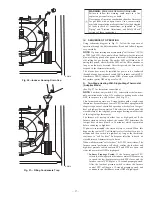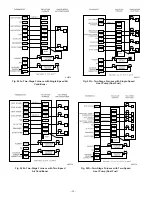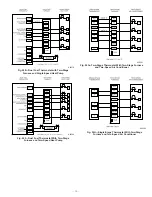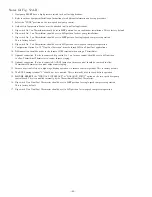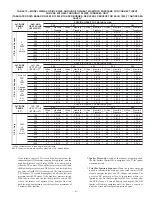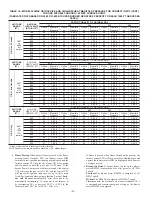
CAUTION:
UNIT CORROSION HAZARD
Excessive exposure to contaminated combustion air may
result in safety and performance related problems.
Combustion air must not be taken from inside structure
because inside air is frequently contaminated by halo-
gens, which include fluorides, chlorides, bromides, and
iodides. These elements are found in aerosols, detergents,
bleaches, cleaning solvents, salts, air fresheners, adhe-
sives, paint, and other household products. Locate
combustion-air inlet as far as possible from swimming
pool and swimming pool pump house.
WARNING:
FIRE AND EXPLOSION HAZARD
Failure to follow this warning could result in fire,
property damage, personal injury, or death.
Solvent cements are combustible. Keep away from heat,
sparks, and open flame. Use only in well ventilated areas.
Avoid breathing in vapor or allowing contact with skin or
eyes.
WARNING:
CARBON MONOXIDE POISONING
HAZARD
Failure to follow this warning could result in property
damage, personal injury, or death.
All combustion-air and vent pipes must be airtight and
watertight. Pipes must also terminate exactly as shown in
Fig. 37, 38, 39, 40, or 41.
NOTE:
The minimum combustion-air and vent pipe length (each)
for these furnaces is 5 ft. Short pipe lengths (5-8 ft) may discharge
water droplets. These droplets may be undesirable, and a 12-in.
minimum offset pipe section is recommended, as shown in Fig. 35,
to reduce excessive droplets from exiting vent pipe outlet.
C.
Combustion-Air and Vent Pipe Diameter
Determine combustion-air and vent pipe diameter.
1. Using Table 7, individually determine the smallest
combustion-air and vent pipe diameters permitted for each
pipe. Pick the larger of these 2 pipe diameters and use this
diameter for both combustion-air and vent pipes.
2. When installing vent systems of short pipe length, use the
smallest allowable pipe diameter. Do not use pipe size
greater than required or incomplete combustion, flame
disturbance, or flame sense lockout may occur.
NOTE:
Do not count elbows or pipe sections in terminations or
within furnace. See shaded areas in Fig. 37, 38, 39, 40, and 41.
EXAMPLE: An 036080 size furnace located in Indianapo-
lis, elevation 650 ft above sea level, could be installed in an
application requiring 3 elbows and 32 ft of vent pipe, along
with 5 elbows and 34 ft of combustion-air pipe. Table 6
indicates this application would allow a 2-in. diameter vent
pipe, but require a 2-1/2 in. diameter combustion air pipe
(2-in. pipe is good for 35 ft with 3 elbows, but only 30 ft
with 5 elbows). Therefore, 2-1/2 in. diameter pipe must be
used for both vent and combustion-air pipes since larger
required diameter must always be used for both pipes. If
same installation were in Albuquerque, elevation 5250 ft
above sea level, installation would require 2-1/2 in. vent
pipe and combustion-air pipe. At 5001- to 6000-ft eleva-
tion, 2-in. pipe is only good for 17 ft with 5 elbows, and
2-1/2 in. pipe is good for 70 ft with 5 elbows.
COMBUSTION-AIR AND VENT PIPE ATTACHMENT
NOTE:
All pipe joints must be cemented except attachment of
combustion-air pipe to inlet housing connection, since it may be
necessary to remove pipe for servicing.
Fig. 34—Combustion-Air and Vent Pipe Connections
A96187
COMBUSTION-
AIR
COMBUSTION-
AIR
AIR
FLOW
VENT
VENT
VENT
AIR
FLOW
AIR
FLOW
AIR
FLOW
UPFLOW
DOWNFLOW
HORIZONTAL-LEFT DISCHARGE
HORIZONTAL-RIGHT DISCHARGE
Select 1 vent pipe connection and
1 combustion-air pipe connection.
COMBUSTION-
AIR
COMBUSTION-
AIR
COMBUSTION-
AIR
COMBUSTION-
AIR
VENT
VENT
VENT
NOTE:
Select 1 vent pipe connection and
1 combustion-air pipe connection.
NOTE:
—27—
Содержание CONDENSING GAS FURNACE 352MAV
Страница 51: ...51...

